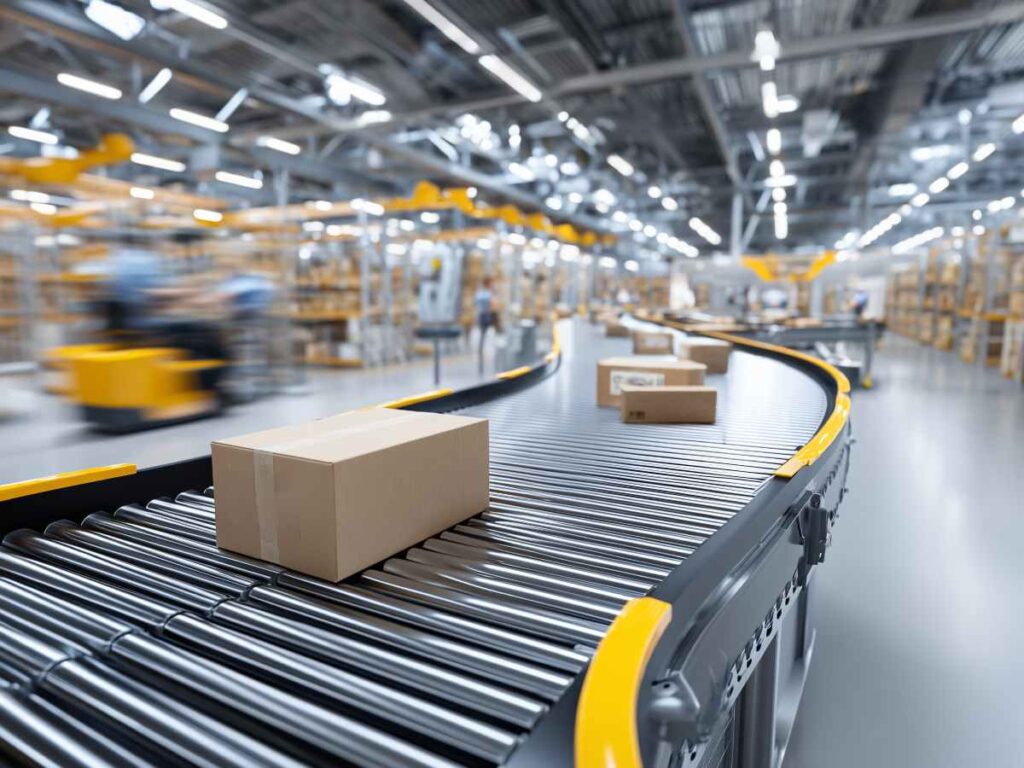The Workforce Shift: How Automation is Redefining Roles in Warehouse Operations

Table of Contents
Automation Redefines Work
The conversation around warehouse automation often centers on the technology itself, robotics, shuttles, and conveyor systems, but the most profound transformation occurs within the workforce. New technologies are fundamentally shifting the nature of labor, not eliminating it. Repetitive, physically demanding tasks are being transferred to machines, allowing human workers to focus on supervision, sophisticated analysis, and adaptive decision-making. This workforce transformation is critical to scaling warehouse operations in a perpetually labor-constrained market, turning fulfillment centers into high-tech hubs for skilled talent.
This transformation is not merely a staffing inconvenience but a critical strategy for mitigating the financial impact of the current labor crisis. Logistics turnover rates remain persistently high, making continuous recruiting and training a major, unyielding cost center. By automating the most physically demanding and tedious tasks—like excessive travel time or heavy lifting—companies can dramatically improve the quality of the work environment. This immediately boosts job satisfaction and, more importantly, retention. The ROI of warehouse automation is increasingly calculated less on direct labor hours saved and more on the reduction of attrition and the attraction of higher-skilled, more stable talent. Warehouse operations that fail to evolve their job design will struggle to compete for skilled labor in the next decade.
From Picker to Technician: Changing Warehouse Profiles
Traditional warehouse roles focused on physical throughput; today’s roles emphasize interface management, system responsiveness, and exception handling. The modern fulfillment center demands workers capable of diagnosing a system error from a control panel, interpreting real-time data to forecast maintenance needs, and managing the integrated flow of material handling equipment.
The new core workforce includes roles like automation technicians, process analysts, and hybrid logistics operators who bridge the gap between IT and operations. Training programs must now include data interpretation, troubleshooting, and system literacy to prepare employees for this shift. This evolution is structurally in both brownfield retrofits and new greenfield facilities, reflecting the latest requirements for effective modern warehouse logistics solutions. The ability to staff these roles successfully is now a primary indicator of a logistics system’s long-term viability.
Role Modularity and Cross-Training as a Resilience Strategy
In a fully automated environment, the value of a cross-trained employee who can flex across multiple warehouse zones, from inbound receiving to outbound shipping, is exponential. Rigid specialization, a hallmark of manual operations, becomes fragile in a system designed for fluidity. Automation, paradoxically, requires a more adaptable human element.
Cross-training creates operational resilience, ensuring continuity during labor shortages or unexpected automation downtime. For example, an operator trained in goods-to-person (GTP) picking and automated sortation can be deployed instantly to the area experiencing a bottleneck, maintaining smooth throughput. A team that understands its work’s upstream and downstream impacts makes smarter, more context-aware decisions, leading to higher efficiency and better exception resolution. This is achieved through a logistics planning process integrating workforce development with system design.
Ergonomic Design and the Human-Centric Interface

The most successful automation deployments do not just replace human labor; they enhance it by improving ergonomics and reducing physical strain. Goods-to-person systems, for instance, eliminate the excessive walking and lifting associated with traditional picking, reducing the error rate and injury.
A human-centric design philosophy focuses on maximizing the operator’s comfort, visibility, and control at every workstation. This includes:
- Optimizing the interface: Ensuring software interfaces are intuitive and prioritize necessary data for quick decision-making.
- Physical well-being: Designing workstations that accommodate different body types and allow minimal repetitive motion.
- Reducing cognitive load: Using automation to handle routine tasks so that human attention is reserved for complex problem-solving.
The impact of ergonomic design extends directly into the talent pipeline. The image of the warehouse is shifting from a low-tech environment to a sophisticated, high-tech center. This change in perception helps attract a younger, more tech-savvy generation seeking meaningful roles. When automation systems utilize intuitive, tablet-based interfaces and clear data visualization, the learning curve for new employees is drastically reduced. This allows for faster onboarding and deployment, directly addressing the labor shortage.
The focus on human-centric design is often inseparable from productivity gains; for instance, optimizing the height and presentation of items in goods-to-person systems improves the operator’s posture and minimizes reaching and searching time, thereby increasing safety and warehouse operations throughput simultaneously. The design of the workstation is now as critical a technology investment as the robot or shuttle system that feeds it.
This commitment to the workforce mitigates risk and increases comfort, making it a powerful tool for retention in an industry notorious for high turnover.
The New Role of Supervision: Analytics and Adaptive Leadership
Automation shifts the warehouse supervisor’s role from task manager to data interpreter and strategic leader. Instead of manually tracking pick rates, supervisors now monitor system dashboards that provide real-time performance indicators, energy consumption metrics, and predictive maintenance alerts.
This requires a new skill set focused on logistics planning and data analytics. Supervisors must:
- Forecast and Adjust: Use the system’s data to predict labor needs for the next shift or peak period.
- Manage Exceptions: Quickly analyze the root cause of automation faults and implement the best workarounds.
- Drive Continuous Improvement: Leverage system data to identify areas for software or process refinement, constantly increasing the efficiency of warehouse operations.
This strategic leadership is critical for maximizing the return on investment in high-capital automation systems. For example, fashion logistics demonstrates how a technology-enabled workforce rapidly adapts to high-SKU, high-turn environments where the system and the operator must collaborate seamlessly.
Workforce Design in Industry-Specific Contexts
The exact impact of automation on roles is highly contingent upon the industry. For example, fashion logistics requires workers to perform visual checks for garment quality and manage flexible pick paths for varied order profiles. At the same time, food retail prioritizes strict freshness handling, temperature zone awareness, and meticulous cold chain compliance.
Workforce roles should always be tailored to the logistical characteristics of the vertical. In complex retail environments, this means ensuring that human operators are present to manage the complexities that machines cannot yet handle, such as subjective quality checks or delicate packaging requirements. Industry modeling improves both hiring success and system ROI. Leveraging an industry-focused logistics strategy, which drives more brilliant workforce design in high-variability environments, is essential for specialized retailers. Ultimately, the quality of warehouse logistics solutions directly impacts the efficiency of the human workers who interface with the technology.
People Still Power the System
Automation changes workflows, but people remain central to system performance, adaptation, and long-term evolution. The future fulfillment center is not humanless; it is merely role-redefined.
Leaders who view automation as a tool to create better, more engaging, and more skilled jobs rather than just a cost-cutting measure will succeed in the next decade. Investing in employee training, cross-functionality, and ergonomic collaboration pays significant dividends in operational resilience, throughput, and employee retention.
The next phase of warehouse operations requires a powerful partnership between human intelligence’s flexibility and machine systems’ speed. By proactively managing this workforce shift, companies can transform their fulfillment centers into high-performance, attractive workplaces fully equipped to handle the logistical complexities of the future. The ultimate measure of a successful warehouse automation project is not just the equipment installed but the capability of the highly skilled human team running it.
